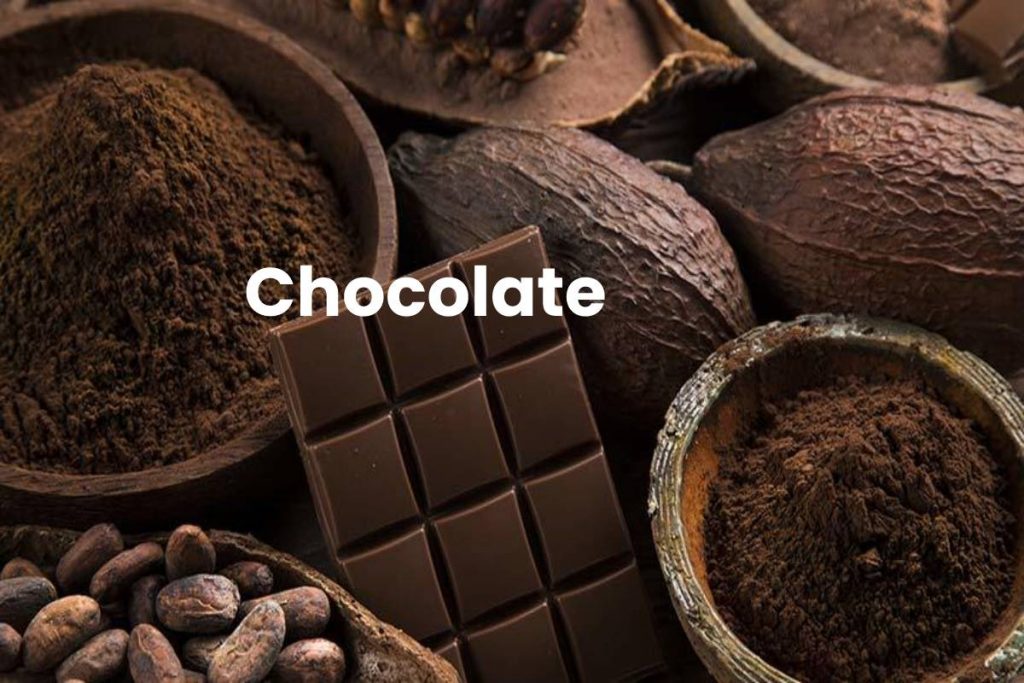Table of Contents
Definition
The chocolate is prepared from the tropical fruit of the “Theobroma cacao cocoa tree,” and its Greek name means the tree of the gods.
The next time you eat a portion of chocolate, don’t feel guilty, you may serve your body, but you need some adjustment. Not all of them either.
It has become very popular worldwide and has since become a popular food product enjoyed by millions every day, thanks to its unique, rich, and sweet taste.
Despite its poor reputation for gaining weight, it is a delicious treatment for several health conditions. but to understand its consequences, we how to make it
The primary habitat of cocoa trees is the amazon river basin in South America. Cocoa trees mean to thrive in hot and humid areas.
Cocoa seeds are harvested by hand because machines may injure trees. The workers then remove the fruits, orange, and ripening and sickle them.
The seeds are placed in large fermentation trays stacked and covered with banana leaves, leaving for 2 to 7 days.
Fermentation produces chocolate flavor and smell, destroys the seed embryo, prevents unwanted germination, and causes white crusts to fall from the seeds.
After fermentation, dry the seeds in the sun and constantly stir to complete their dryness.
Seeds can be dried faster in rotary dryers but taste better in the sun.
The grains are then transported to chocolate factories, cleaned, roasted in large ovens, broken, and turned into a liquid paste.
Once you’ve determined what kind of it to produce, separate the ingredients by quality, and add flavors or extra ingredients such as nuts.
Must first, look at its origins.
Chocolate Types
It is divided into three different categories depending on the cocoa and milk ratios it contains.
White chocolate contains milk and cocoa butter but does not contain cocoa. Dark chocolate contains cocoa without milk.
Milk chocolate remains open on both.
But what effect does chocolate have on our health?
It receives a lot of lousy pressure because of its high fat and sugar content.
It has also been associating with acne, tooth decay, obesity, high blood pressure, coronary artery disease, and diabetes.
However, according to a scientific review, chocolate is not as bad as it is thought.
The authors noted that cocoa, the main ingredient in it, contains biologically active phenolic compounds.
It has changed people’s views on chocolate, stimulating research into how it affects aging, conditions such as oxidative stress, blood pressure regulation, and atherosclerosis.
The more cocoa content, as in dark chocolate, the greater the benefits. Dark chocolate may also contain less sugar.
In addition, chocolate bars do not hold only cocoa; the benefits and risks of any other ingredients, such as sugar and fat, should be considered.
Benefits Of Chocolate
1- Reduces Cholesterol
one study suggests that chocolate consumption may help reduce harmful cholesterol levels.
RESEARCHERS HAVE BEGUN INVESTIGATING WHETHER CHOCOLATES CONTAINING PS AND COCOA FLAVANOLS (CF) HAVE ANY EFFECT ON CHOLESTEROL LEVELS.
2- Increases Cognitive Functions
drinking 2 cups of hot chocolate daily helps maintain brain health and reduce memory deterioration in older people.
It also helps improve blood flow to parts of the brain where it was needed.
The cocoa extract has been observed to reduce or prevent damage to nerve pathways in Alzheimer’s patients and slow down symptoms such as cognitive decline.
3- Reduce The Risk Of Heart Disease And Stroke
In a study of more than 44,000 people, Canadian scientists found that people who ate one meal of it were 22% less likely to have a stroke than those who did not.
Another study also suggested that eating 100 grams of it a day may occur associated with a reduced risk of heart disease by about a third.
4- Oxygen Is Provided To Athletes
the results of a scientific experiment suggest that eating dark chocolate may increase oxygen availability during fitness exercises.
After eating dark chocolate, athletes used less oxygen when cycling at a moderate pace and walked longer.
5- Nourishes The Skin
Flavonols in dark chocolate protect the skin from sun damage, but this does not mean moving away from sunscreen.
Negative Effects Of Chocolate
It may have many health benefits, but it can have some adverse effects as well.
1- Weight Gain
some studies recommend that it consumption does link with increased BMI and central body fat. It contains a high-calorie content due to its sugar and fat content.
Anyone trying to lose weight / maintains weight should reduce their chocolate consumption and check the label for their preferred product to find out the ingredients.
But the irony here is that eating a small piece of it can help lose weight.
But it should be dark and leave to dissolve on the tongue for 20 minutes to stimulate the secretion of the satiety hormone, which reduces eating.
2- Migraines
some people may experience increased migraines when eating it regularly due to their Tremaine, histamine, and fennel alanine content. However, research remains mixed.
3- Damages Bone Health
There is some evidence that it may cause weak bone structure and osteoporosis.
The results of one study found that older women who ate it every day had less density and strength in their bones.
Side Effects Of Caffeine
dark chocolate has a high equal of caffeine compared to milk and white chocolate.
Consuming large amounts of dark chocolate can increase your heart rate, diarrhea, anxiety, irritability, nervousness, and dehydration.
Caffeine can also cause increased blood pressure and difficulty concentrating or concentrating, not to mention insomnia.
5- kidney Stones
according to the University of Maryland medical, dark chocolate contains oxalate, which increases the risk of kidney stones forming.
Prepared to form kidney stones or have kidney stones in the past, you need to avoid consuming oxalate in various forms, including dark chocolate.


